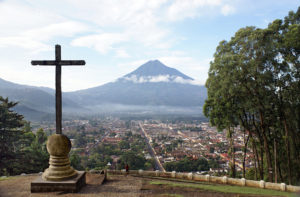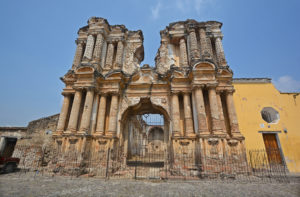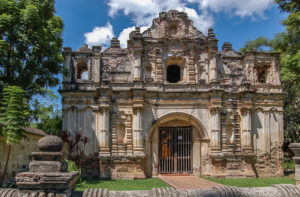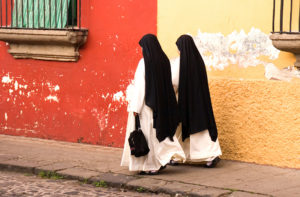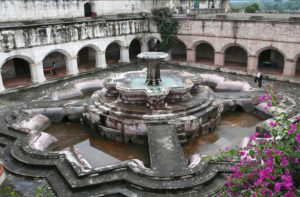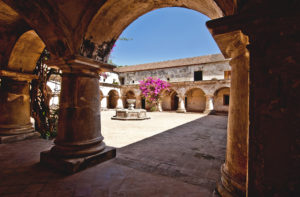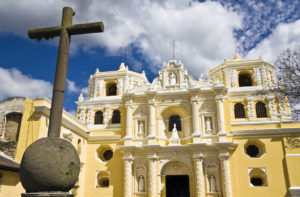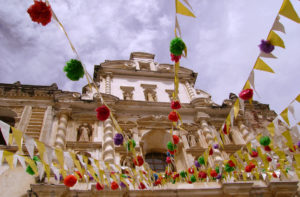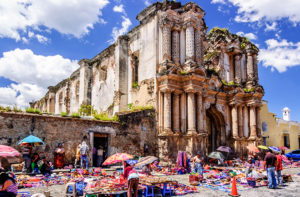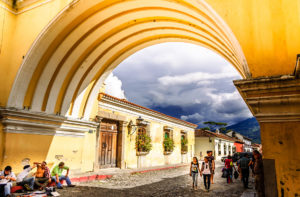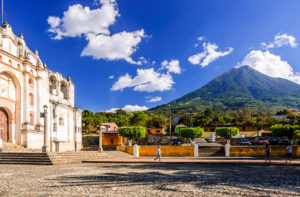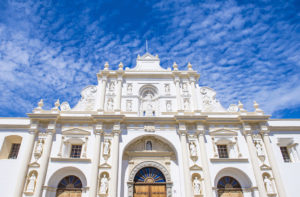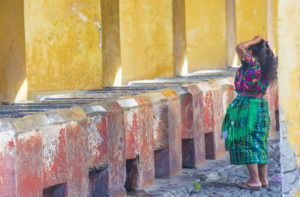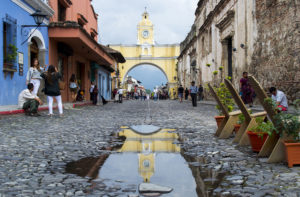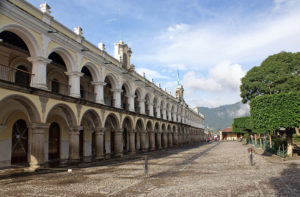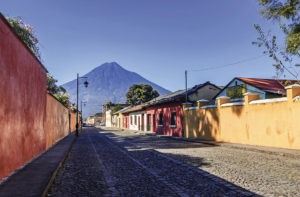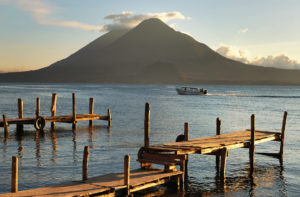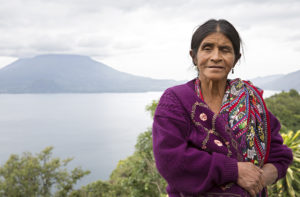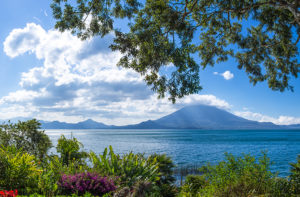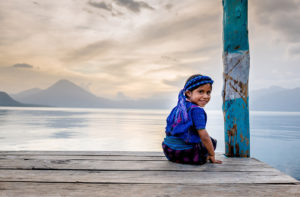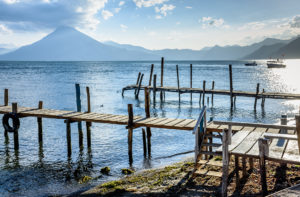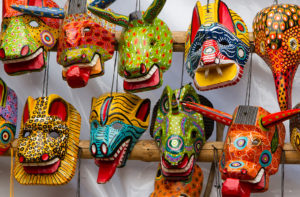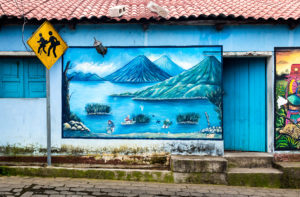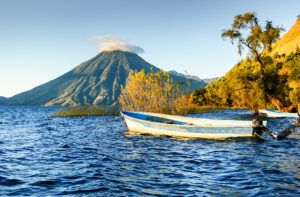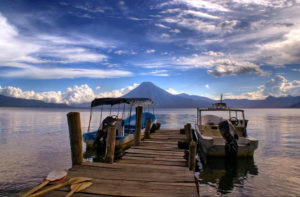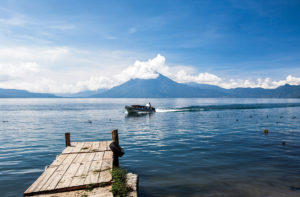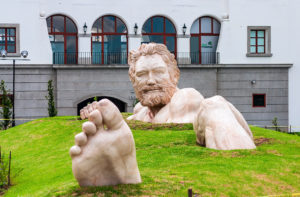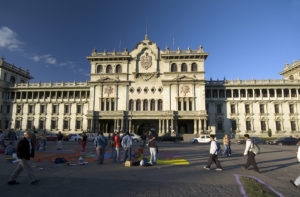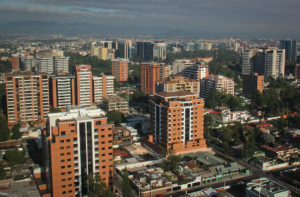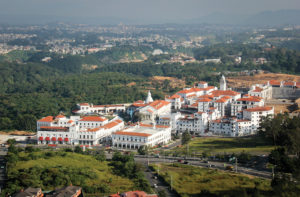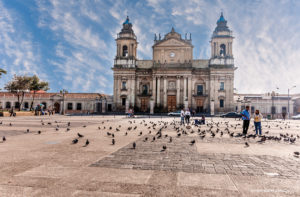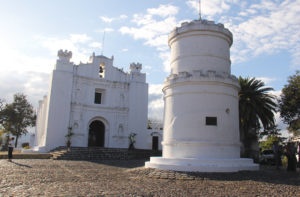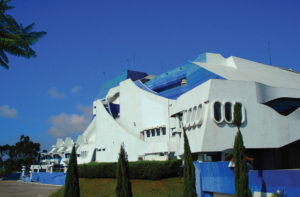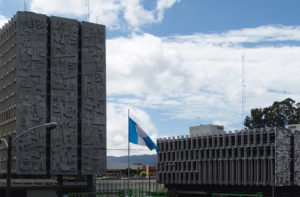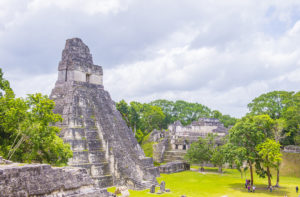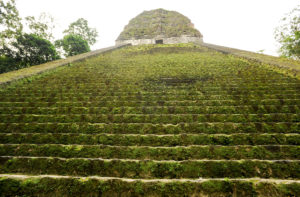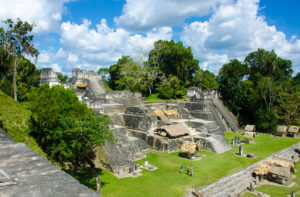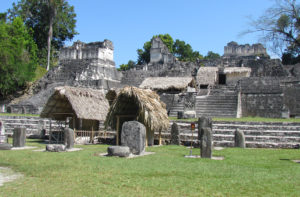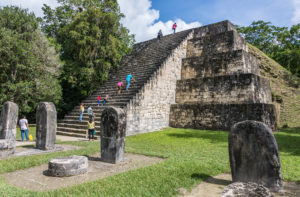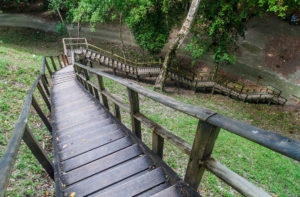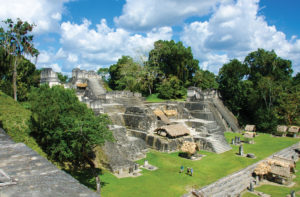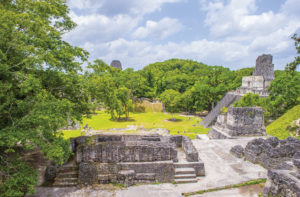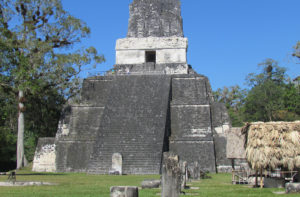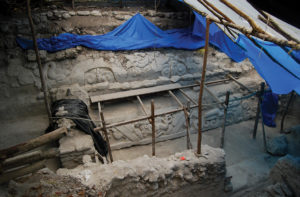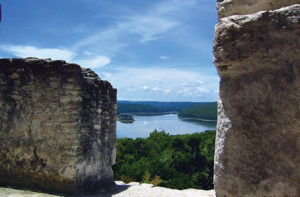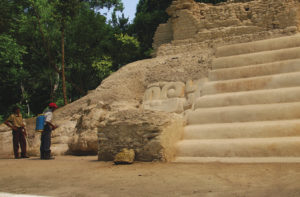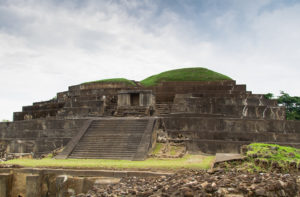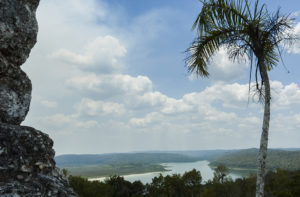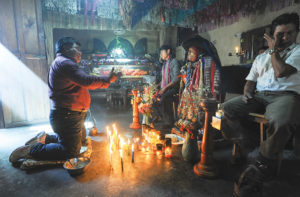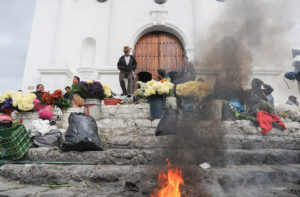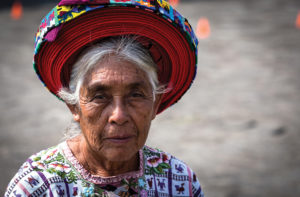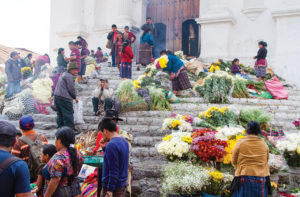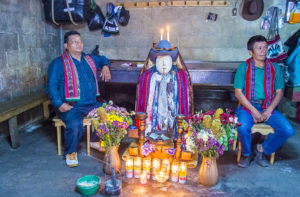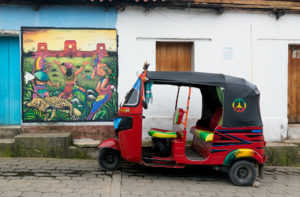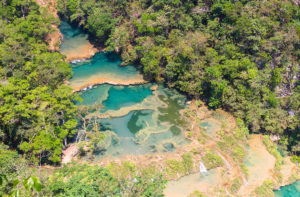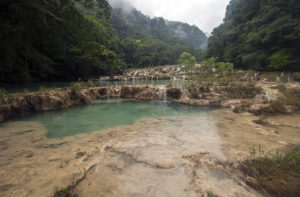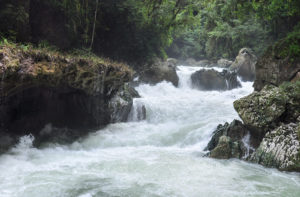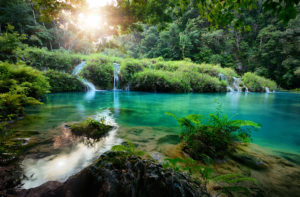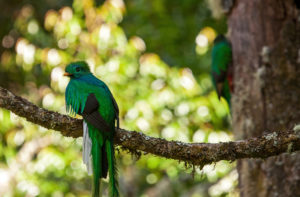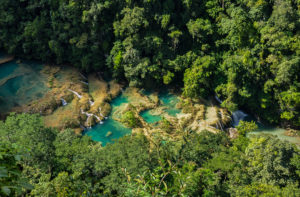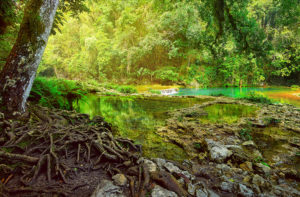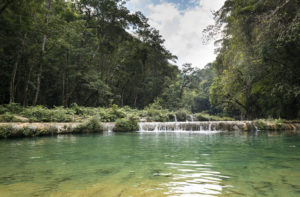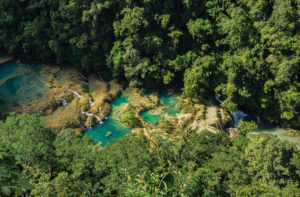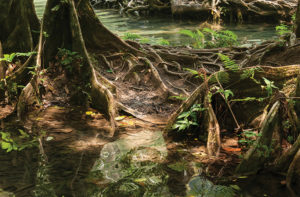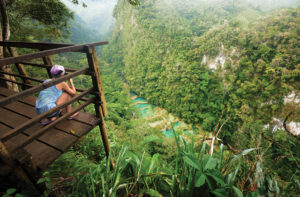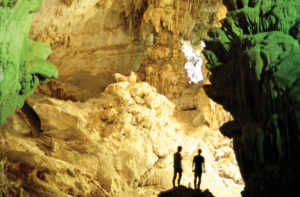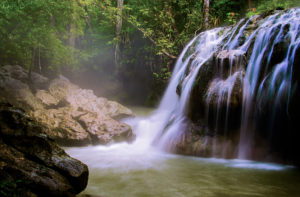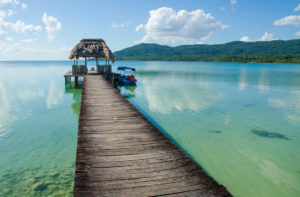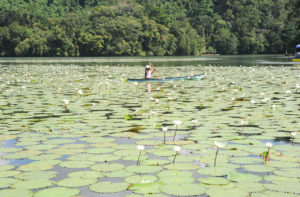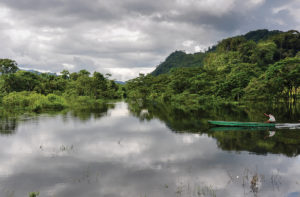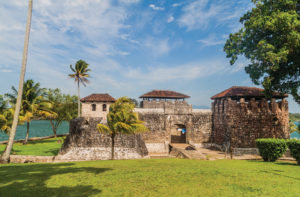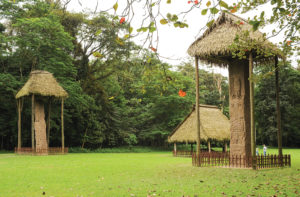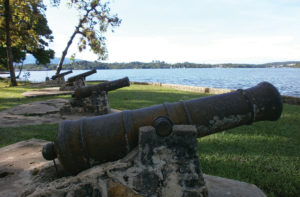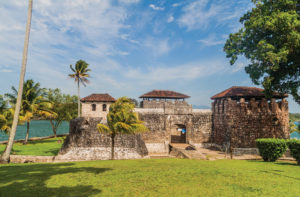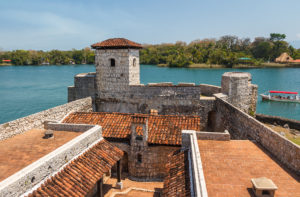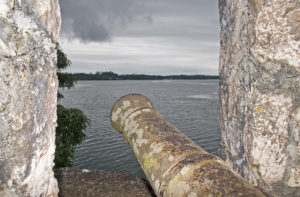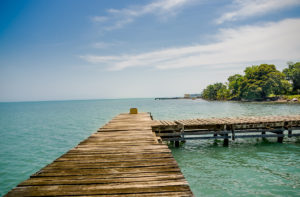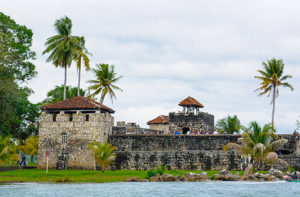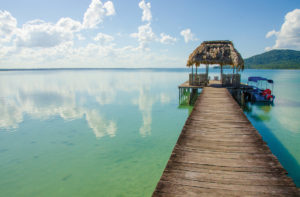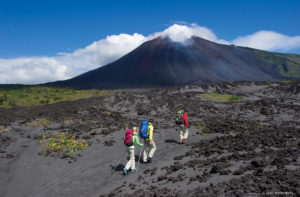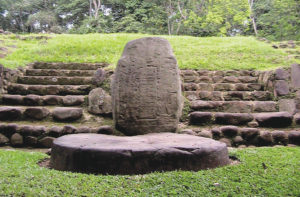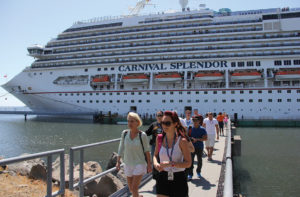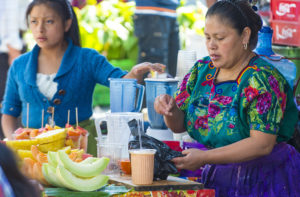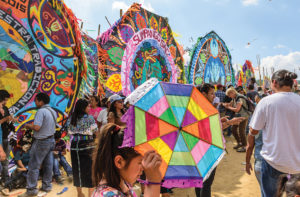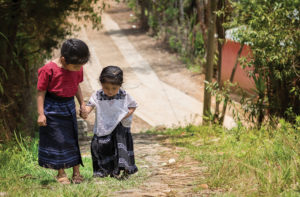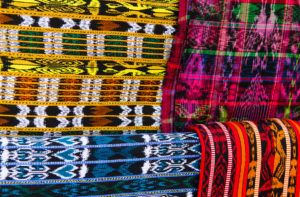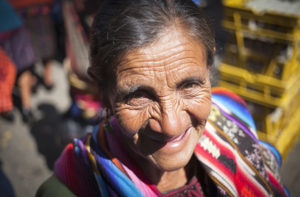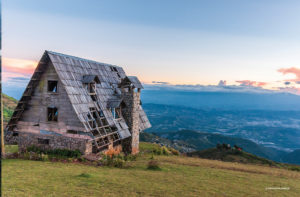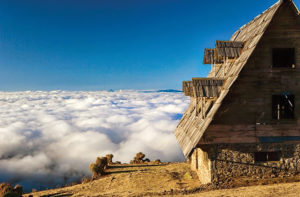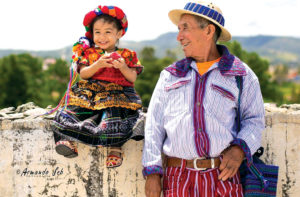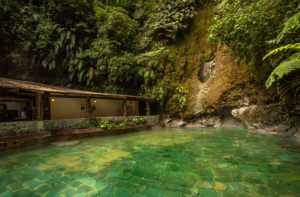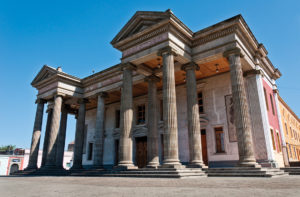ANTIGUA GUATEMALA
Three impressive volcanoes surrounding the beautiful colonial City of Antigua Guatemala. City of cobblestone streets where we find monuments in almost every corner of this wonderful city. This great city was declared a World Heritage Site by UNESCO in 1979. It has hosted international events with a variety of activities that can be set in the beautiful historical venues.
PANAJACHEL - ATITLÁN
Considered one of the most beautiful in the world by the famous writer Aldous Huxley. Three spectacular volcanoes, Tolimán, Atitlán y San Pedro, are the natural setting of the lake. It has an area of 125 squared kilometers, and its located 1,560 meters above sea level, here you will be able to visit some villages around and feel the real maya living culture.
GUATEMALA CITY
The New Guatemala of the Assumption, is the Capital City, established in 1776, is the financial and administrative center of the nation. It is a modern city in constant innovation and gateway to the world through La Aurora International Airport. It is the ideal place for conferences and conventions enjoy playing golf, walking many shopping centers and even perform medical treatment site.
TIKAL
Tikal is the largest excavated site in the continent. It is Guatemala’s most famous cultural and natural reserve. Tikal possesses a certain magic. We dare say that Tikal is so irresistible once you are here, you’ll find yourself wanting to stay just a little longer! This majestic archaeological gem comprises 222 square miles of jungle all around the ceremonial center. It took the University of Pennsylvania 13 years to uncover about 10 square miles of structures at Tikal. However, much of it is still left to be unearthed. So, do take some advice. Don’t try to see all of Tikal in one day, even if you are in excellent shape!
YAXHÁ - EL MIRADOR
Yaxha means ¨Emerald Water¨, this complex was discovered by Teobert Maler in 1904, who during an expeditionary trip to Tikal, ended in this beautiful and great Maya Site, from the Classic Period, and its located in the Nakum & Naranjo Basin, a complex neighboring Tikal. This complex has middle size and big temples, it was a ceremonial center that you will be able to visit in short time. Be prepared to see this spectacular site!
The ruins of El Mirador were initially discovered in 1926 but remained obscured by a tangle of jungle growth in northern Guatemala for another 36 years. What archaeologists finally found upon closer inspection turned what they knew about Preclassic Maya civilization on its head.
CHICHICASTENANGO
Is considered one of the most important villages where the religous sincretism can be found, its Santo Tomás Church was built in 1540 over the base of an archaeological pre-Hispanic temple, it is a splendid sample of colonial architecture. In its outsides as well as inside the Mayan and ladino rites are mixed. On its 18-step stairway is of importance for the indigenous ritual practices, by Maya chuchkajau priest, who pray and born corncobs full of copal inside. Inside, entire families are kneel and pray before the altars, full of candles, flower offerings, alcohol and some cases food.
VERAPACES
It is characterized by its lush forests, unique waterfalls, natural pools, varied flora and fauna.The territory is ideal for people who like sports and outdoor recreation. Since the ascent to mountains rainforest, visits to the Quetzal Bird Reserve National Park, such as rafting on the white water rafting of Cahabón River, make this region a destination of adventure and wonder of nature. It will take each of its extensive and long caves; including Lankin and Candelaria. Famous for a natural stone bridge about 500 meters, which has a set of pools or wells in different ways, named Semuc Champey.
RÍO DULCE - QUIRIGUÁ
With its original charm. rich ecosystems an the joy of the Garifuna culture it offers an encounter with a lush caribbean natural beauty.
Its also has the archaeological site of Quiriguá, declared a World Heritage Site by UNESCO. There is the famous stele E of 10.5 mts. high, the highest oft que Mayan World. In addition, visitors can discover the history of the Castle of San Felipe, which was built to prevent the English pirates reached Guatemalan territory.
PACIFIC COAST
In its splendid beaches of over 300 kilometers of volcanic sand you can be surfing and other water sports. It is also ideal for fishing Sailfish, sport place by which the country was recognized as the number one in the region and second worldwide. This region is also possible to scale volcanoes and visit archaeological sites like Takalik Ab Aj in Retalhuleu and El Baul.
HIGHLANDS
Guatemala invites you to come and enjoy the culture thru the richness of the Maya heritage, tying to get into the cosmovision of the ethnical groups. Our country has a variety of traditional activities, where you will discovery every step you take into the highlands, Sacred Temples and Sites, museums, natural reserves, Volcanoes, lakes, rivers, communities, local markets and much more, will make your trip into Guatemala and unforgettable experience, combining the interaction and hospitality of our people, whom preserve the Cultural and Natural Heritage, filled of color, magic and friendly people.
HUEHUETENANGO
The spectacular Sierra de los Cuchumatanes is the highest non-volcanic region in all of Central America. Its crescent shape runs from the neighbouring Chiapas in Mexico, northeast until the mountains of the Verapaces to the east crossing the departments of Huehuetenango and El Quiché. In total it covers 15 percent of the country.
QUETZALTENANGO
Quetzaltenango is also known as Xela or Xelajú. Mexicans were the people who accompanied the Spanish conquistadors who gave it the name of Quetzaltenango or Wall of quetzales. Of notable historical importance, for just over 30 years, this city was the capital of the Sixth State of the Highlands, independent territory covering much of the coffee-growing region of the south coast and the highlands.
PHOTO CREDITS: BeatMamut, Gabriela Soto, Marcos Zárate, David Juárez, Kobby Dagan, Pauline Lippmann, Roberto Destarac Photography, Armando Seb www.flickr.com/photos/robbiedes/, www.shutterstock.com.


